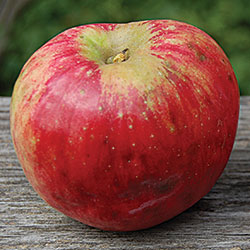These trees replaced a couple of junk maple trees, fast growing hybrids I purchased by mistake a few years back. A friend and I cut them down 4-5 years ago and I turned them into more appropriate firewood, long since sent up the chimney. Those trees were themselves a replacement for a hackberry tree that the aforementioned winds blew down—cut clean to the ground by a flat-line gust. The city has a free tree program and a list of trees they will plant for you, all hardwood varieties. They’re not fans of fruit trees, however. So of course, I didn’t ask permission; I like food in my yard, and these trees bring the number of fruit trees we have to eleven.
I do still need to get rid of my remaining turf grass. Not sure what's "allowed," but I know whatever it is, it can't obstruct someone getting out of their car. Oh how we bow down to the almighty automobile in this country. I might just settle for some decorative rock. As for the hillside in the background, I'm thinking of a little periwinkle ground-cover To be continued in a future post.
 |
| The junk maples I planted in ignorant error, now but wispy memories. |































